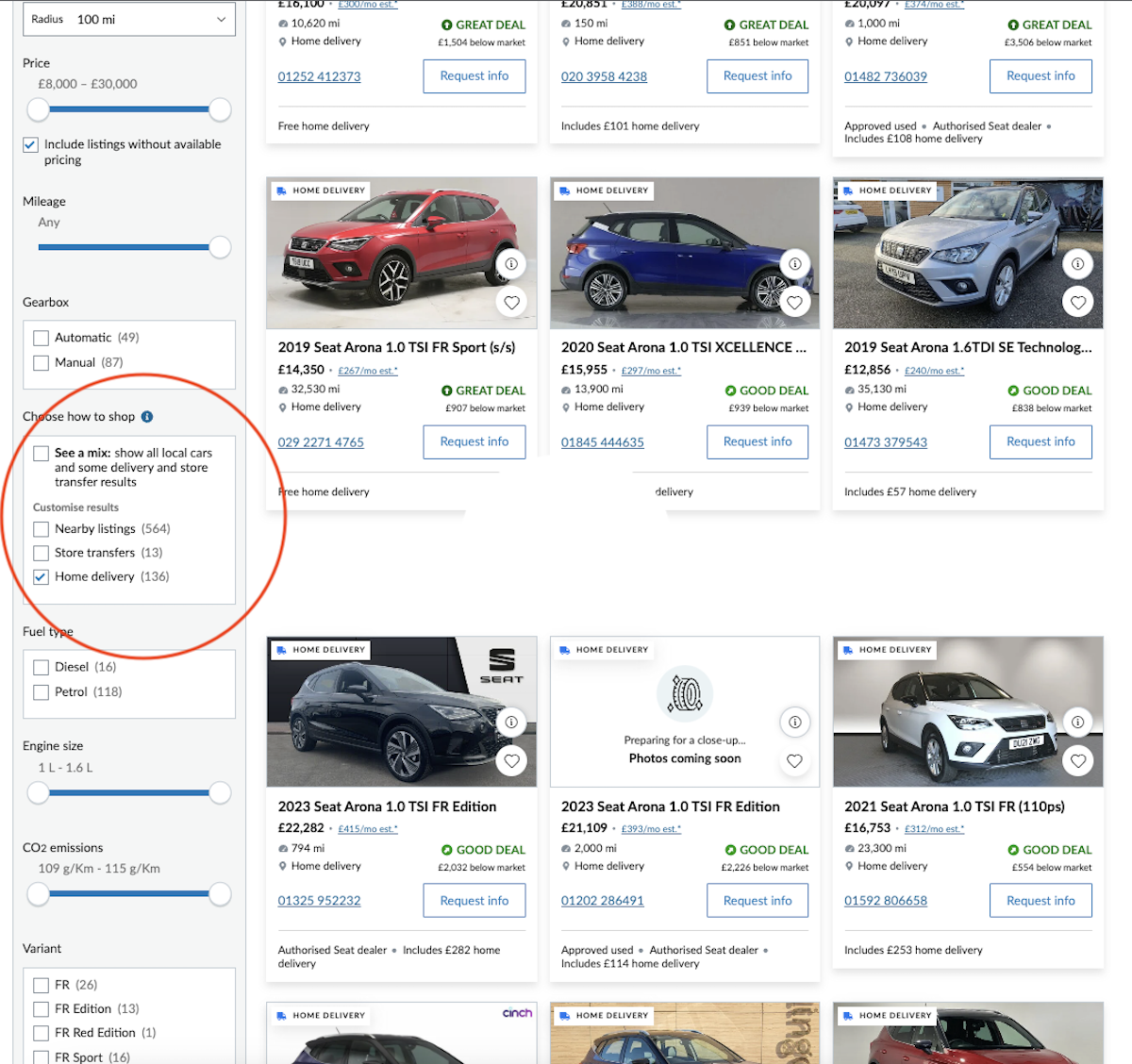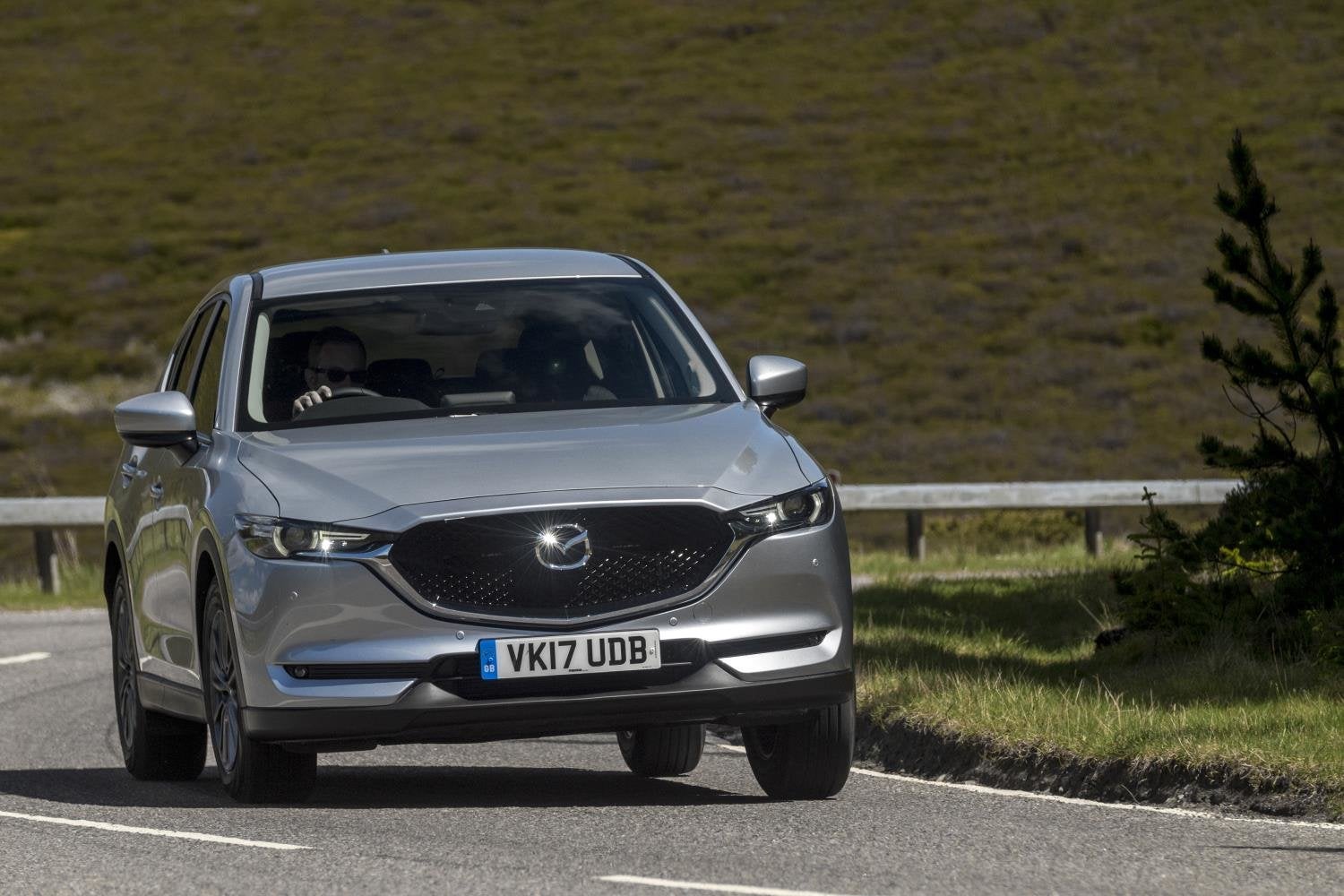Purchasing a used car without first having seen it isn’t as unusual these days as it once was. There are a multitude of sources for car buyers, ranging from CarGurus listings to eBay, as well as companies dedicated to online car sales only.
In this guide explain what the various options are, and then break it down step-by-step to show how to buy a car without seeing it first.
How to Buy a Car Without Seeing it
- Buying a Car Online via CarGurus
- Other Ways to Buy a Car Without Seeing it
- Buying Sight Unseen: The Pros and Cons
- Step 1: Read the Advert Carefully
- Step 2: Examine the Pictures
- Step 3: Phone the Seller
- Step 4: Carry Out a History Check
- Step 5: Organise an Inspection
- Step 6: How to Pay
- Conclusion
Buying a Car Online via CarGurus
At CarGurus, we allow you to choose whatever option is best for you, whether it's buying through a dealer that offers a fully online experience, or visiting a dealership prior to purchase. To find online car sales via CarGurus, search for a car as you normally would, then select Home Delivery in the filters tool. We'll then show you dealers who offer fully online car sales, as well as any associated costs that come with home delivery.

Other Ways to Buy a Car Without Seeing it
Online car sales are growing in popularity, so the concept of buying a car without seeing it in person is more common than it used to be. Some companies now specialise in this, to the point where the only way to buy a car via them is entirely online. To help reassure consumers who might be nervous about this, companies that specialise in 100% online car sales often offer some kind of protection or reassurance, such as a returns periods.
In addition to companies that only sell 100% online, many dealerships have adapted to offer this service. Whether you buy approved used, from a supermarket or from an independent operation, the biggest advantage of buying from a second-hand car dealer as opposed to a private seller is that, while you are likely to pay more, you are also more likely to be protected by the Consumer Rights Act if a fault emerges and you need to reject or return the car.
Alternatively, you could buy a car privately without seeing it first. In this instance there are a few additional steps we'd recommend such as paying for a vehicle history report and pre-purchase inspection.
Below we've outlined advice that applies to both 100% online or private purchases, as well as the primary pros and cons.
Buying Sight Unseen: The Pros and Cons
One of the biggest advantages of buying a car without seeing it first is that it immediately opens up a much wider search area – and thus a larger variety of models – than would otherwise be possible. This means you can exploit regional price differences that make certain types of car valued more highly in one part of the country than another. Maybe you can find a bargain BMW in Bromley, a value-for-money Audi in Aberdeen, or a cheaper Hyundai in Halifax. There could be lower demand for coupes in Croydon; all of this could potentially mean lower prices compared to elsewhere.
On the downside, while there are steps you can take to ascertain if the car is as described, you still won’t be able to drive it until you’ve paid your money and the car is in your possession, and the onus will be on you to look out for fraudsters who may be advertising cars that don’t exist. These are often fairly easy to spot if you stick to one simple rule: If it sounds too good to be true, then it almost certainly is. Beyond that advice, here are some basic steps to buying a car sight unseen.
Step 1: Read the Advert Carefully
Information is your friend when it comes to used car purchases, and the more of it the seller provides, the better. First, check that the vehicle’s age, mileage, number of owners, engine size, and specification are included and meet your requirements. The advert should also provide a detailed list of equipment and tell you when the car’s next MOT and service are due.
In addition, consider how the advertisement is worded. If it's a private sale it will ideally have been written by an enthusiastic owner, explaining how meticulously he or she has cared for the car. An honest seller will also list any faults or blemishes so you have a reasonable idea of the car's condition.
Step 2: Examine the Pictures
If you’re not going to be able to visit a seller to see a car in the metal, then you at least want a good selection of pictures. Check that every angle is covered, including under the bonnet and inside the boot, and zoom in to look for signs of excessive wear. If the written description says the car has done 50,000 miles, but you can see worn seat fabrics or cracked leather, ask “Why?”
If there’s a part of the car you’re keen to see that isn’t included in the standard pictures, contact the seller and ask for another photo.
Step 3: Phone the Seller
If you’re happy at this stage, it's often worth speaking to the seller via a phone call. Not only will that let you ask any questions you might have, but it should also let you get a good feeling for their character (private sale) or customer service (dealership).
Consider if they're answering your questions in a way that sounds genuine. For example, if the advertisement describes the car in a way that makes the owner sound like a true enthusiast, but on the phone they don’t seem to know much about the history of the car, you may have reason to be suspicious.
Also remember to ask why they're selling the car, and if it’s been reliable. If you’re still happy with the car and the seller appears to be genuine, start talking about what kind of deal can be done, with the caveat that any price is subject to a history check and an inspection.
Step 4: Carry Out a History Check
We’d always recommend running a vehicle history check through an online provider such as HPI, the RAC Car Passport, or Experian AutoCheck. Vehicle history reports from these companies will tell you if a car has any outstanding money owed on it, has been involved in an insurance claim, or has been clocked (that is, somebody altered the indicated mileage on the odometer).
In fact, more than 80 different points can be checked, including if a car has ever been recorded as stolen or scrapped, what its VIN number should be (ask the seller to send photos of the VIN plate on the car and the V5C registration form to ensure these all match up), or whether it’s an imported car, rather than one that was sold originally in the UK.
HPI claims that one in three of the cars it checks has some kind of hidden history, so paying from £10 or so to have access to this information will be worth it for the peace of mind alone. No one wants to fall victim to a scam or find something murky in their potential next car’s history.
Step 5: Organise an Inspection
It might cost you a few hundred pounds for an independent pre-purchase inspection, but whether the resultant report (which is usually delivered within 24 hours) tells you not to buy because the car is not as described or to proceed with confidence, it will be money well spent.
Not all inspections will include a test drive, but specialists will go over the car with an expert eye, looking for any repaired accident damage or wear and tear that will need addressing (if the car needs a new set of tyres, then you’re instantly looking at a bill of at least £100) and whether its general condition tallies with the description.
Step 6: How to Pay
Assuming all has gone to plan, it’s now time to organise payment for your new car. If a private seller asks for a holding deposit, it’s sensible to use a secure money transfer service such as PayPal, which will record the payment and hold on to funds until the car is in your possession. Dealers will generally prefer a credit card or debit card payment, so it is a good idea to get it in writing that the deposit is paid on the condition that the car is as described. Either way, you want to keep a deposit to a minimum.
At this point you’ll also need to determine how and when to pay the balance, and commit to a collection or delivery date, which will be your chance to look over the vehicle. If you’re buying the car using a loan or finance scheme, don’t forget to first read our guide to the different types of car finance.
Conclusion
To sum up, while buying a car sight unseen isn’t without its challenges, there’s no reason to write off the possibility altogether. That's especially true if you're considering the dealership route, where the process has evolved massively in the past few years.
They key things to remember are that it is you, the buyer, who is in control, and that if that idea sounds daunting, then purchasing your new vehicle through a company that offers fully online car sales represents the safest route to a satisfying purchase. And if all else fails, you can always head back to the showroom.



